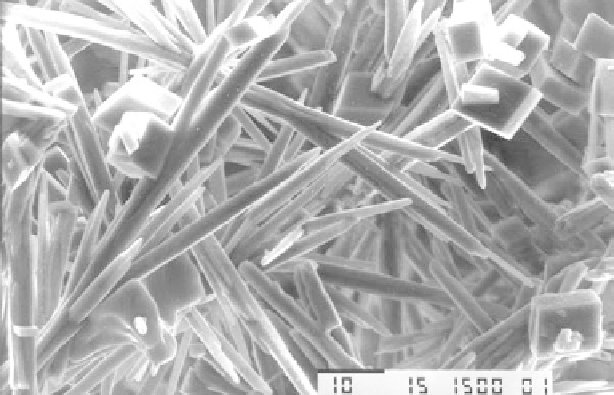Geoscience Reference
In-Depth Information
Fig. 7.15
Calcite needles observed in the rhizosphere. Each of them measures one or a
few
µ
m in diameter and up to 200
µ
m in length. Higher magnifi cations show that the needles
are often formed by stacking up of small rhombohedra of calcite slightly staggered and form-
ing fi ne steps. Also, some large rhombohedra of calcite are dispersed between the needles.
Photo
: A. Guyon.
In caves, speleologists sometimes observe
moonmilk
, cottony mineral
accumulations that coat various constituents with calcite fibres. The
origin of these formations is still not very well understood. But most
mineralogists are in agreement that they appear in environments where
living organisms are involved. Besides, 'the carbon isotope of needle-fibre
calcite suggests dominantly biological origin of the carbon' (Bajnoczi
and Kovacs-Kis 2006). Other theories are no more that hypotheses:
fungal hyphae that will serve as support for growth of the mineral;
needles forming even within hyphae (Callot
et al
. 1985; Phillips and Self
1987)…
Studies show that the calcite needles are formed and destroyed
rapidly, in less than a year, and are rapidly renewed. To the naked
eye, these crystallizations resemble to a small extent hyphae of white
mushrooms, whence their name
pseudomycelia
. But they give effervescence
with acid!
While studying the rhizosphere with the electron microscope, Jaillard
(1982, 1984, 1987) discovered the following mechanism: in the roots, the
Calcified cells/cytomorphic calcite

